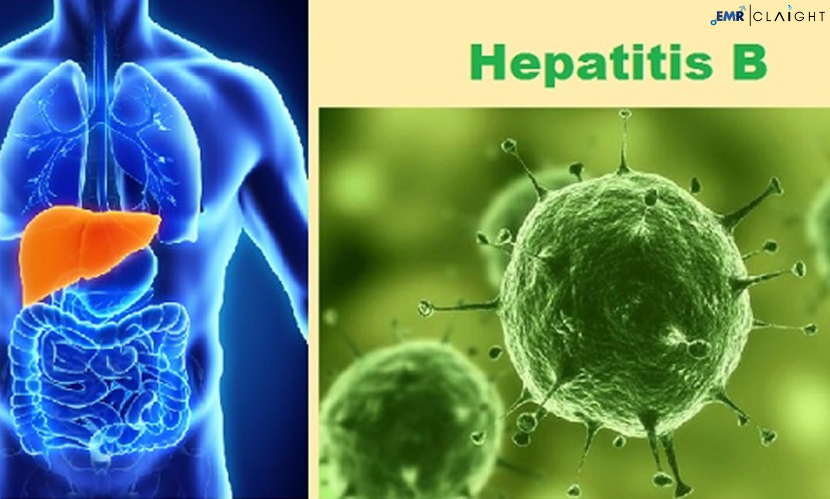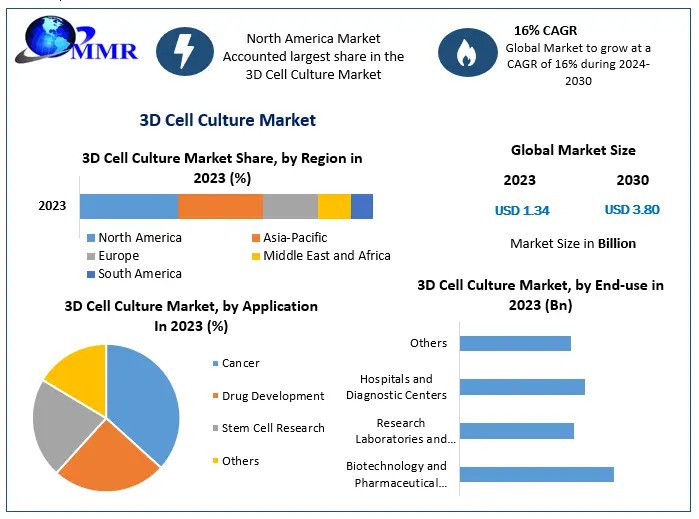The global hepatitis B infection treatment market is experiencing significant growth, driven by increasing rates of hepatitis infections, better diagnostic procedures, and growing awareness of the disease’s risks and implications. Hepatitis B, a viral infection that affects the liver, is a major public health concern worldwide. According to recent estimates, the market size for hepatitis B infection treatments reached a value of approximately USD 4.5 billion in 2023. This is expected to grow at a compound annual growth rate (CAGR) of 3.6% from 2024 to 2032, ultimately reaching around USD 6.1 billion by 2032.
As the demand for more effective and accessible treatments increases, the market is seeing a surge in innovation and strategic collaborations by pharmaceutical companies. This blog will provide a comprehensive overview of the hepatitis B infection treatment market, covering trends, growth drivers, key players, market segments, market size, share, and COVID-19’s impact on the industry.
Understanding Hepatitis B
Hepatitis B is a viral infection caused by the hepatitis B virus (HBV), which leads to liver inflammation and can cause both acute and chronic conditions. Chronic hepatitis B can result in severe complications such as cirrhosis, liver failure, and liver cancer. It is spread through blood, semen, or other body fluids, and remains a major health challenge, particularly in regions with high infection rates such as Asia, Africa, and parts of South America.
The treatment of hepatitis B focuses on controlling the infection, preventing its progression, and managing complications. The use of antiviral medications, lifestyle changes, and regular monitoring is common in the management of this chronic condition. In recent years, there have been significant advancements in treatment options, including oral antiviral drugs, immunotherapies, and in some cases, liver transplantation.
Market Segments
The hepatitis B infection treatment market can be broadly segmented into the following categories:
- Drug Type
- Antiviral Drugs: These drugs are the primary treatment for hepatitis B infection, aimed at suppressing viral replication. Popular antiviral treatments include nucleos(t)ide analogs like tenofovir, entecavir, and lamivudine.
- Interferons: Interferon therapies, particularly pegylated interferon-alpha, are used in specific cases, especially for patients who are unable to tolerate oral antivirals or have a resistant strain of the virus.
- Combination Therapies: Some patients benefit from combination therapies that utilize multiple antiviral agents to enhance efficacy and reduce the chance of resistance.
- Route of Administration
- Oral: The majority of hepatitis B treatments are oral, with drugs like tenofovir and entecavir being available in tablet form. These treatments are preferred for their convenience and ease of use.
- Injectable: Interferon-based therapies are typically administered via injection. Although less commonly used, they are important for specific patient groups with more complex needs.
- End-User
- Hospitals and Clinics: The largest share of the market is held by hospitals and healthcare clinics, where hepatitis B patients receive both diagnostic and therapeutic interventions.
- Homecare Settings: The increasing trend towards home care for patients with chronic conditions, including hepatitis B, is boosting demand for homecare-based treatments, particularly oral antivirals.
- Distribution Channel
- Retail Pharmacies: These serve as a key point of access for antiviral medications for patients in both rural and urban areas.
- Hospital Pharmacies: These pharmacies cater to patients undergoing hospital treatment and typically stock both oral and injectable forms of hepatitis B treatments.
Get a Free Sample Report with Table of Contents: https://www.expertmarketresearch.com/reports/hepatitis-b-infection-treatment-market/requestsample
Key Players in the Hepatitis B Infection Treatment Market
The hepatitis B treatment market is competitive, with key pharmaceutical players leading the development of new therapies and expanding treatment options for patients. Some of the key companies in the hepatitis B treatment market include:
- Gilead Sciences: Headquartered in Foster City, California, Gilead is one of the most prominent players in the hepatitis B treatment market. The company is known for its groundbreaking antiviral drugs such as tenofovir and Viread.
- Bristol-Myers Squibb: Based in New York, Bristol-Myers Squibb has developed several antiviral agents for hepatitis B and other viral infections. Their portfolio includes products like Baraclude and Hepatitis B-specific therapies.
- AbbVie: AbbVie, headquartered in North Chicago, Illinois, offers treatments that target the replication of the hepatitis B virus. The company’s role in the market has been growing, especially through acquisitions and partnerships.
- Johnson & Johnson: As one of the largest pharmaceutical companies in the world, Johnson & Johnson also plays a significant role in developing hepatitis B therapies. Their commitment to research has allowed them to introduce a variety of antiviral options for hepatitis B patients.
- Merck & Co.: Known for its contribution to hepatitis B treatment, Merck has developed therapies such as Zepatier, which targets the virus by preventing its replication.
- Novartis: Novartis, headquartered in Basel, Switzerland, offers treatment options for hepatitis B and has focused on developing innovative therapies to manage the condition better.
Market Outlook and Trends
The outlook for the hepatitis B infection treatment market is largely positive, with growing awareness and early diagnosis contributing to market expansion. The rising incidence of hepatitis B, especially in emerging economies, combined with improved diagnostic techniques, is expected to further boost demand for antiviral therapies.
Key Trends Impacting Market Growth:
- Innovations in Antiviral Medications: The development of more effective and less toxic antiviral drugs is expected to drive growth in the treatment market. Newer agents that provide better patient outcomes and reduce the risk of drug resistance are in high demand.
- Shift Toward Long-Term Management: With the rising number of chronic hepatitis B cases, there is a noticeable shift towards long-term antiviral treatment strategies. This has led to a growing need for medications that offer sustained viral suppression and low side effects.
- Increasing Focus on Hepatitis B Vaccination: Prevention strategies, including widespread vaccination programs, are likely to complement treatment efforts. Vaccination efforts, especially in high-risk regions, are expected to reduce the future burden of hepatitis B.
- Research into Functional Cure: A key area of interest is research into a functional cure for hepatitis B. While a complete cure remains elusive, ongoing clinical trials are exploring therapeutic vaccines and gene-editing technologies that could eradicate or significantly reduce HBV.
- Adoption of Digital Health Solutions: With increasing healthcare digitalization, telemedicine, and remote monitoring for hepatitis B patients are gaining traction. This trend is expected to grow as more patients access treatment from the comfort of their homes, supported by online consultations and digital prescription services.
Market Share and Size
The hepatitis B infection treatment market is expected to witness substantial growth over the forecast period. As of 2023, the market size was estimated at USD 4.5 billion and is forecasted to grow at a CAGR of 3.6%, reaching an estimated USD 6.1 billion by 2032. North America holds a significant share of the market due to advanced healthcare infrastructure, but regions such as Asia-Pacific are expected to see the fastest growth due to high hepatitis B infection rates and increasing healthcare accessibility.
COVID-19 Impact on the Hepatitis B Infection Treatment Market
The COVID-19 pandemic has significantly disrupted healthcare systems worldwide, and the hepatitis B treatment market was no exception. The pandemic affected diagnosis, treatment availability, and patient access to healthcare facilities. Many elective procedures were delayed, including non-urgent testing and routine appointments for chronic conditions like hepatitis B.
However, the pandemic also underscored the importance of healthcare infrastructure, particularly in dealing with viral infections. As a result, there has been an increase in demand for digital health solutions, telehealth consultations, and home care for chronic hepatitis B patients. On the positive side, the pandemic has heightened global awareness about infectious diseases and their long-term effects on liver health, potentially leading to increased investments in hepatitis B research and drug development.
Frequently Asked Questions (FAQs)
- What is the treatment for hepatitis B infection? The primary treatments for hepatitis B include antiviral medications such as nucleos(t)ide analogs (e.g., tenofovir and entecavir) and pegylated interferon. Treatment focuses on managing the infection and preventing complications like liver failure or cirrhosis.
- Is there a cure for hepatitis B? Currently, there is no complete cure for hepatitis B. However, antiviral medications can suppress the virus and prevent liver damage. Research is ongoing to find a functional cure.
- What are the side effects of hepatitis B medications? Side effects vary depending on the medication, but common side effects of antiviral drugs include nausea, fatigue, and gastrointestinal issues. Interferon treatments may cause flu-like symptoms and mood changes.
- What is the global outlook for the hepatitis B treatment market? The hepatitis B treatment market is expected to grow steadily due to increasing incidences of hepatitis B infections, better diagnostic tools, and advancements in antiviral therapies. The market size is projected to reach USD 6.1 billion by 2032.
- How does the COVID-19 pandemic affect hepatitis B treatment? The COVID-19 pandemic disrupted routine care for hepatitis B patients, including diagnostic testing and treatment access. However, the pandemic also accelerated digital health adoption, enabling more remote consultations and home-based treatments.
Growth and Market Size Forecast
The hepatitis B infection treatment market’s size is poised to grow steadily over the next decade, driven by factors such as increased disease awareness, improved treatment options, and the need for better prevention strategies. By 2032, the market is expected to reach approximately USD 6.1 billion, representing a CAGR of 3.6%.
Insights
The hepatitis B treatment market is witnessing transformative changes. With the rising global burden of hepatitis infections, the market is likely to see further innovation in drug development. Ongoing research into functional cures and the development of less toxic, more effective treatments are critical in shaping the future of hepatitis B care.
As more regions invest in better healthcare infrastructure and diagnostic capabilities, access to hepatitis B treatment will improve, leading to better outcomes for patients. Meanwhile, market players will continue to focus on delivering affordable and accessible antiviral therapies to meet the growing demand.
Related Trending Reports
https://www.expertmarketresearch.com/reports/human-insulin-market
https://www.expertmarketresearch.com/reports/proteasome-inhibitors-market
https://www.expertmarketresearch.com/clinical-trials/colorectal-cancer-drug-pipeline-analysis




